The Galician “queimada”, which literally means “burnt”, is an alcoholic drink based on brandy which, along with other ingredients, is literally burnt and cooked to be consumed hot. However, before handing it out and drinking it, the incantation has to be recited that turns this simple drink into an eye-catching ritual. It is a traditional Galician show based on fire, alcohol and poetry, typical in festivals and celebrations. Surely you are familiar with it, and in this article we will delve into its history, ingredients, preparation and meaning.
History
Regarding its origins, they are a bit uncertain. Popularly, and depending on its cultural components, different origins can be attributed to it: Celtic, due to the poetic element of the incantation; perhaps Germanic, given the taste for collective drunkenness and the taste for hot and burning alcohol; perhaps Arab, due to the use of sugar and distilled spirits. Carlos Alonso del Real, professor of Prehistory at the University of Santiago de Compostela, already considered these elements in a 1972 article published in the magazine “…”. Grail “but states that Until the introduction of the alembic (of Arab origin) between the twelfth and thirteenth centuries, as well as cane sugar (also of Arab origin), this drink would not exist. Thus, the origin of the drink would be, at least in the late Middle Ages.
Later, the Galician anthropologist and ethnographer Xosé Manuel González Reboredo considers that the consumption of brandy, even unburned, was a classic in rural Galicia as a remedy against colds, even administered to children: there are still Galicians today who remember it. Following his research, he found that around 1950 the Galician emigrants began to use aguardiente at parties and celebrations. Even in 1955 the potter from Mondoñedo, Tito Freire, began to create the typical earthenware pots and cups with which the queimada is still prepared and consumed today.
Finally, in 1967, the multifaceted and self-taught artist Mariano Marcos Abalo wrote the incantation of the queimada, on the occasion of a floral festival in Vigo. He was modifying and perfecting the incantation, which little by little became famous, so much so that some printers began to print and sell it without the author’s permission. This fueled the belief that it was an anonymous text and perhaps created in time immemorial, until Mariano decided to register it in 2001.
Ingredients
The main ingredients are Aguardiente de orujo de Galicia sugar and lemon peel. There are variants in which orange is introduced instead of lemon, even other fruits, as well as coffee beans.
As a guideline proportions, although you can always vary them depending on your tastes, would be two liters of brandy, about three hundred grams of white sugar (we will reserve two big spoonfuls to light the fire), one or two pieces of lemon or orange to use their peel and a good handful of coffee beans. You know, you can vary the proportions depending on your palate or how many people are participating.
Preparation
To prepare a queimada, pour the Galician Orujo brandy and sugar into a clay container, in a proportion of 120 grams of sugar for each litre of brandy. Then add the lemon peel and the coffee beans. Stir and set fire to a saucepan or ladle in which we have previously placed a little sugar and brandy. Very slowly, approach the vessel until the fire spreads into the liquor in the vessel. Stir until the sugar is consumed, and it is here that we can recite the incantation. Here is one of our guides performing the all-inclusive ritual for some lucky pilgrims.
If you read the incantation below, you will notice the register and vocabulary she uses, reminiscent perhaps of a Galician witch or “meiga” in the midst of brewing potions and concoctions. Thus, while stirring, we raise the ladle and make fascinating cascades of fire over the vessel, and we must recite the incantation with a certain passion, feeling and intonation.
Mouchos, coruxas, toads and witches.
Demos, trasnos e dianhos,
espritos das nevoadas veigas.
Corvos, pintigas e meigas,
feitizos das mencinheiras.
Poor angry canhotas,
home of worms and animals.
Lume das Santas Companhas, mal de ollo, negros meigallos, cheiro dos mortos,
thrones and thrones.
Oubeo do can, pregon da morte,
foucinho do satiro e pe do coello.
Pecadora lingua da mala muller
casada cun home vello.
Averno de Satan e Belcebu,
lume dos cadavres ardentes,
mutilated bodies of the indecent,
peidos dos infernales cus,
muxido da mar embravescida.
Barriga inutil da muller solteira,
falar dos gatos que andan a xaneira, guedella porra da cabra mal parida.
With this fol I will raise the flames of this smoke that resembles hell,
e fuxiran as bruxas acabalo das sas escobas, indose bañar na praia
areas.
Oide, oide! The noises they give
those who can’t leave
of not being exhausted,
thus being purified.
And when this brebaxe
baixe polas nosas gorxas,
we will be free from the evils of our
ialm and of all embruxamento.
Forzas do ar, terra, mar e lume,
a vos fago esta chamada: si e verdade que tendes mais poder que a humana xente,
and now and now, do it with your spirit
two friends who are outside,
participate with us in this queimada.
Owls, owls, toads and witches.
Evil demons and devils,
spirits of the snowy plains.
Crows, salamanders and meigas,
spells of the healers.
Rotten reeds with holes in them,
home of worms and vermin.
Fire of the souls in pain, evil eye, black spells, smell of the dead,
thunder and lightning.
Bark of the dog, announcement of death; snout of the satyr and foot of the rabbit.
Sinful tongue of the evil woman
married to an old man.
Hell of Satan and Beelzebub,
fire from the burning corpses,
mutilated bodies of the indecent,
farts from the infernal asses,
mooing of the raging sea.
Useless womb of the unmarried woman,
meowing of cats in heat,
bad and dirty hair of the bad goat.
With this ladle I will raise the flames of this fire that resembles the fire of hell,
and the witches will flee on horseback from their broomsticks, and go swimming on the beach.
of the fat sands.
Hear ye, hear ye! The roars they give
those who can’t leave
to burn in the firewater
thus being purified.
And when this concoction
down our throats,
we will be free from the evils of our soul and from all bewitchment.
Forces of air, land, sea and fire,
to you I make this appeal: if it is true that you have more power than human beings,
here and now, make the spirits
of friends who are outside,
join us for this queimada.
Meaning
Apart from the festive use that is given to the queimada, for example, very typical in the feast of the Night of San Juan between 23 and 24 June or on the eve of All Souls’ Day, it is attributed healing properties, and it is believed that protects the one who consumes it from evil spells and evil spirits. Likewise, the incantation says in its final paragraphs: “And when this concoction goes down our throats, we will be free from the evils of our souls and from all bewitchment”.
Other European cultures have similar concoctions, high in alcohol content and often burnt, such as the “feuerzangenbowle”, a type of German punch; the “glühwein” or German mulled wine and even the burnt absinthe in Central Europe.
Anywhere in Galicia, and even in Spain, you can get the ingredients (mainly the aguardiente de orujo) and the necessary tools to make it. Even, many restaurants offer this service, with incantation included, for their customers. We know many of these places, and what better way to celebrate the end of the Camino in Santiago de Compostela than with a queimada. If you want a complete pilgrimage and Galician experience, contact us, we will help you cleanse your soul of all the bad things.
we
we will help you to cleanse your soul of everything bad.

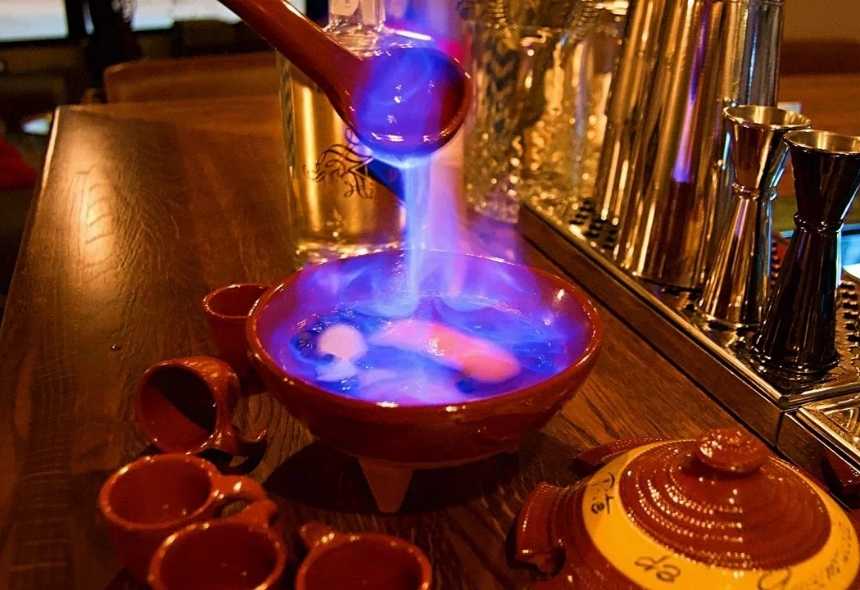
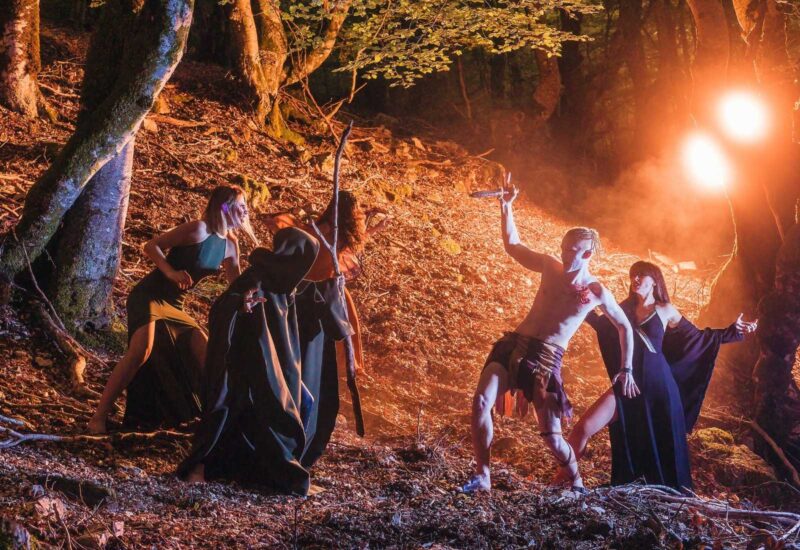
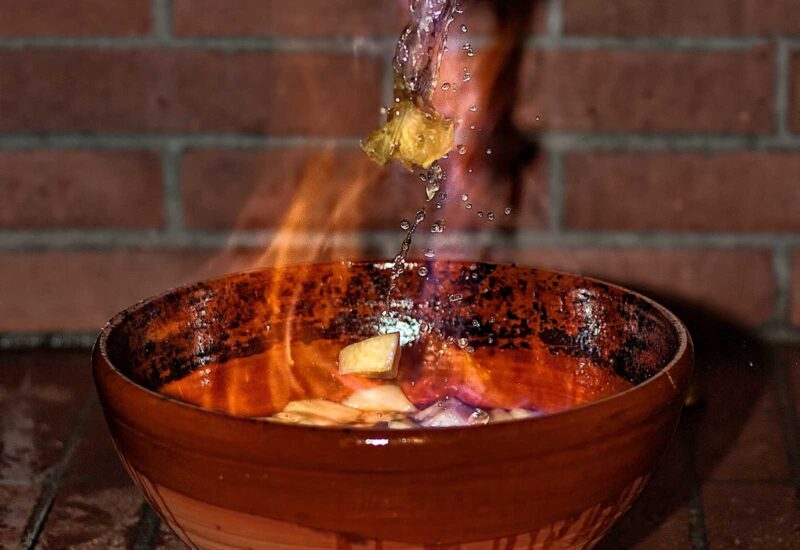
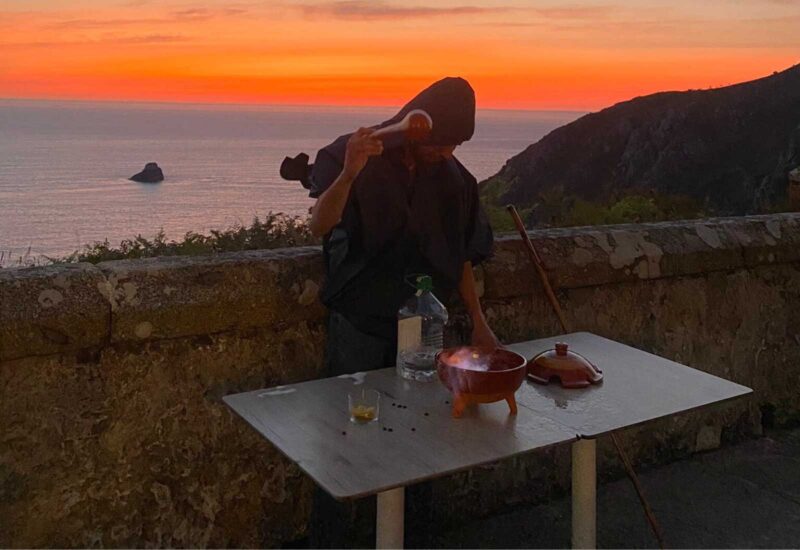
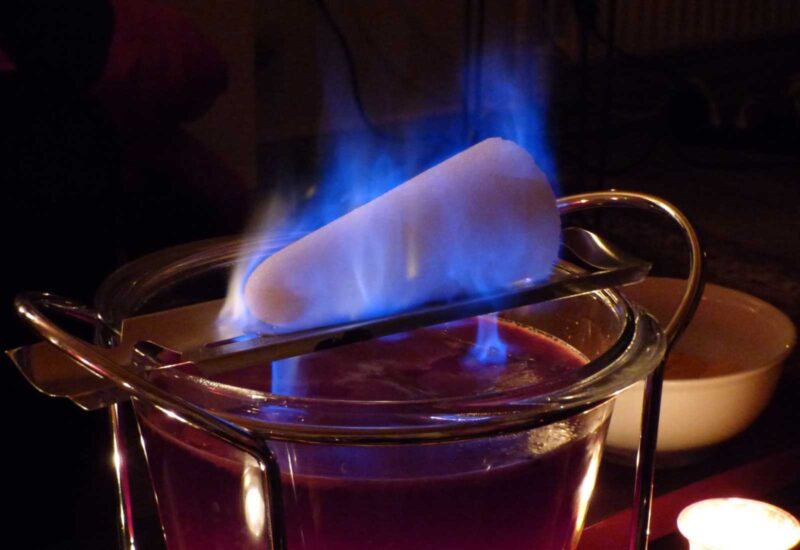


I agree entirely! My daughter and I went to a bar around the corner from the cathedral. They played Janice Joplin for me and gave me this ceremony after sunset, and my heart felt full to bursting. Perfect way to say farewell to Spain!